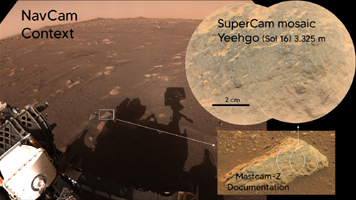
Figure 1Combining two images, this mosaic shows a close-up view of the rock target named "Yeehgo" from the SuperCam instrument on NASA's Perseverance rover on Mars. The component images were taken by SuperCam's Remote Micro-Imager (RMI) on March 7, 2021 (the 16th Martian day, or sol, of Perseverance's mission on Mars). To be compatible with the rover's software, "Yeehgo" is an alternative spelling of "Yéigo," the Navajo word for diligent.
The target is 10.9 feet (3.325 meters) from the rover. Each of the two images in the mosaic shows a field of view 2.5 inches (6.2 centimeters) in diameter.
Perseverance's Navigation Cameras (Nav Cam) and Mastcam-Z instrument also took images of that area at the same time to provide multiple views of the rock target, as seen in the annotated version of this image.
A key objective for Perseverance's mission on Mars is astrobiology, including the search for signs of ancient microbial life. The rover will characterize the planet's geology and past climate, pave the way for human exploration of the Red Planet, and be the first mission to collect and cache Martian rock and regolith (broken rock and dust).
Subsequent NASA missions, in cooperation with ESA (European Space Agency), would send spacecraft to Mars to collect these sealed samples from the surface and return them to Earth for in-depth analysis.
The Mars 2020 Perseverance mission is part of NASA's Moon to Mars exploration approach, which includes Artemis missions to the Moon that will help prepare for human exploration of the Red Planet.
NASA's Jet Propulsion Laboratory, which is managed for NASA by Caltech in Pasadena, California, built and manages operations of the Perseverance rover.
For more about Perseverance: mars.nasa.gov/mars2020/

